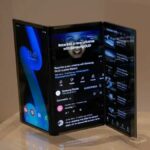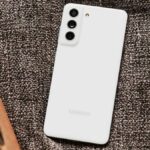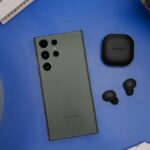
It’s not a secret that, at some point in the future, Samsung wants to be the manufacturer that releases a smartphone that can fold. Another patent application just reinforced that opinion.
As revealed by Patently Mobile, by way of a patent application that Samsung filed back in June of this year, but only recently published by the United States Patent and Trademark Office, Samsung is still hard at work on a foldable smartphone, but is also doing a very Samsung-like thing: Adding new features.
In the latest iteration of attempting a foldable smartphone, Samsung details how a single, large display could be folded in half, thanks to a new hinge system, which is depicted in the graphic above. (It sort of looks like a Nintendo 3DS when closed…) Interestingly enough, it looks like Samsung could be using interactive app icons on the edge of the display when the device is closed. This is an idea that Samsung introduced with its edge-branded devices, so it seems like a proper fit for a device like this.
There’s new features in this patent app, though. That includes an integrated projector, which can display a picture on a wall nearby. Or, if you’re feeling like you want to be in a Star Wars prequel, there’s a method for displaying a hologram, too. It would be displayed in a stereosopic (3D) way, and be “displayed in the air using interference of light.”
Interesting, to say the least. Samsung doesn’t include a way that it would sell those two features to consumers, and doesn’t include any notion of a specialized app for the device, either.
As for when this device, or any device like it, might see the light of day? Anyone’s guess is good enough at this point.
What do you think?
[via Patently Mobile]


















